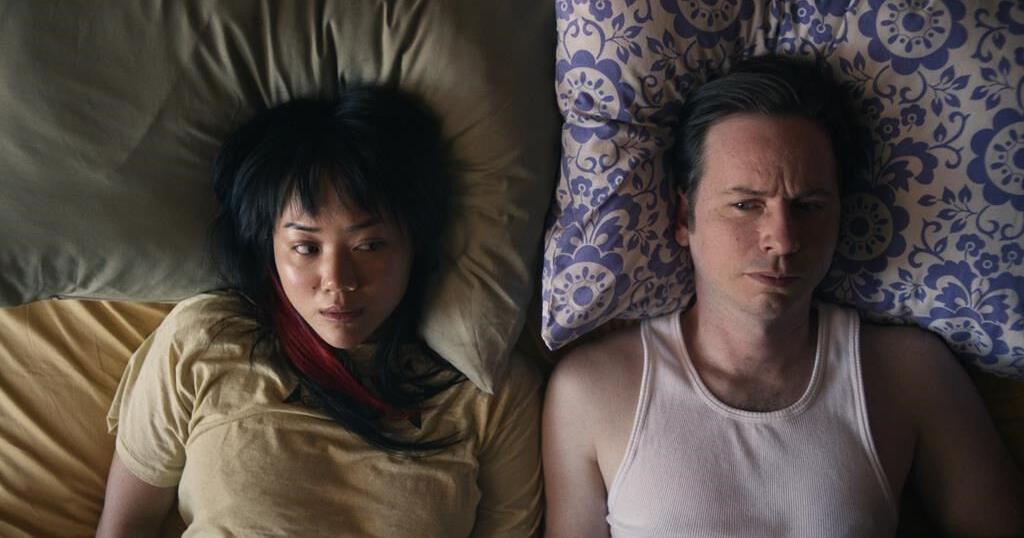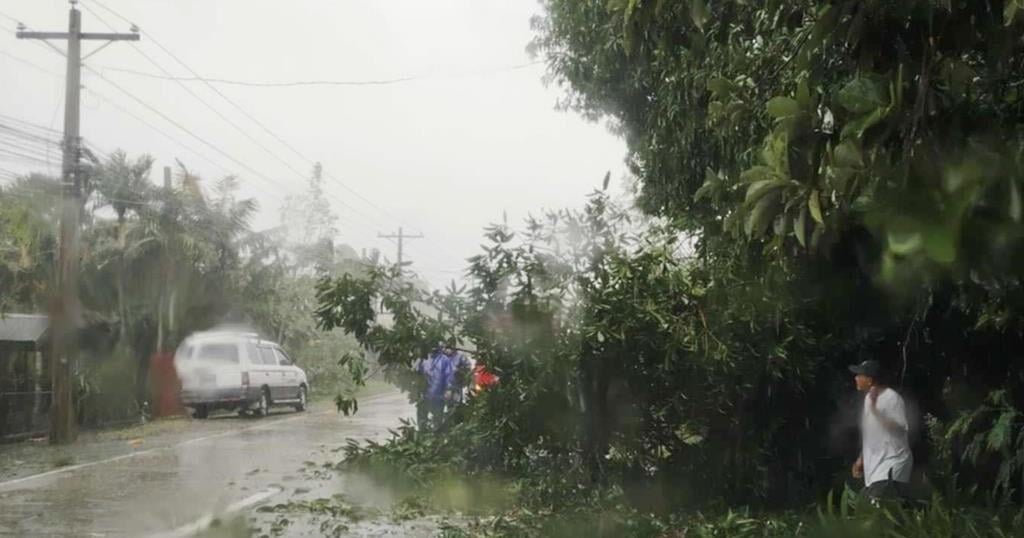TORONTO – A sex-work comedy, a Tragically Hip documentary and a wartime family drama are among the Canadian titles premiering at the 49th annual Toronto International Film Festival.
After Hollywood strikes dampened last year’s event, the festival returns Thursday with 59 homegrown films from established and emerging directors.
The Canadian Press caught up with five directors bound for the movie marathon taking place Sept. 5 to 15.
SOOK-YIN LEE, director, “Paying For It”
Lee says she “really loved” her ex-boyfriend Chester Brown’s 2011 comic strip memoir “Paying For It,” about his experiences with Toronto sex workers after their real-life breakup. So much so that she adapted it for the big screen, resulting in a dramatized look at how they navigated their complicated relationship in turn-of-the-millennium Toronto.
On turning her breakup into a film: “We loved each other and the idea of breaking up was inconceivable. So, as I began to look for love and connection through dating — the culturally approved way of doing that — he was going to explore the world of paying for sex. The key to turning it into a movie was to focus on the relationship between Chester and I, as well as our separate pursuits to find love and connection.”
On recreating Y2K-era Toronto: “You don’t know what you’ve got till it’s gone. All of the cities are changing. They’re gentrifying. I knew that I wanted to have a grungier, rawer feel of Toronto. I didn’t want to show a touristy Toronto that was all dazzled up. I also didn’t have very much money. So, I was like, ‘We’re going to shoot it in the house where the real events occurred.'”
Release dates: Premieres at TIFF on Thursday; hits theatres in early 2025.
ARSHILE EGOYAN, director, “Before They Joined Us”
For his second short film, Atom Egoyan’s son chose to share his mother Arsinée Khanjian’s journey of immigrating to Canada from war-torn Lebanon in the 1970s. The 30-year-old only learned the specifics of the “Exotica” actress’ story a few years ago. “It’s this insane sequence of events she experienced that I couldn’t believe she never talked about before,” he says.
On what made his mom’s story so compelling: “She went to live with her aunts, who believed that at the end of that calendar year, Armageddon would come upon them. So, having escaped the horrors of the Lebanese civil war, she entered this psychological space where the world is going to end. It just gets worse. With immigrant stories, we like to think people find new lives and everything works out well, but this is an example where it goes the other way.”
On whether his dad gave him any notes: “He’s a fantastic father. He’s an incredible mentor to me. But I think when it comes time for me to be in my creative space, he knows to remove himself. Unless there’s something I want to ask him, he really gives me room to be on my own journey. That being said, he’s really excited when he sees the work I do, and sharing the film with him and my mother was really special for all three of us.”
Release dates: Premieres at TIFF on Sept. 11.
MIKE DOWNIE, director, “The Tragically Hip: No Dress Rehearsal”
Several decades of documentary filmmaking and a side gig directing the Hip’s “Poets” music video ably equip Downie for this four-hour dive into one of Canada’s most beloved bands. He also happens to have unrivalled access to the band as the brother of late frontman Gord Downie.
On telling the Hip’s story: “As a brother, I wanted to cement his legacy in the minds of Canadians and music fans all over the world. And when I say my brother, I mean the band. For me, my entry is through my brother. (When) I experienced the band all those years, Gord was always the portal.”
On the target audience: “We were thinking of people on the other side of the world that were thinking, ‘I don’t know much about Canada, and I don’t know anything about this band. What, if I start right here?’ We wanted people like that to be drawn into the story.”
Release dates: Premieres at TIFF on Thursday, begins streaming on Prime Video on Sept. 20.
ALI WEINSTEIN, director, “Your Tomorrow”
After she “rediscovered” Ontario Place during the COVID-19 pandemic, Weinstein says she became obsessed with researching its history and architecture. In 2021, when Premier Doug Ford’s government announced plans to redevelop the Toronto waterfront area as a massive spa and indoor waterpark, she began work on a documentary.
On the communities she captured: “I was seeing people on the beach and bird watchers who knew each other had formed this community down at Ontario Place. I thought, what is so special about this place as it is right now, as a public park, that is attracting so many people? My aim was to document this very unique moment in the life cycle of Ontario Place, after its heyday. That’s what kept me going over nearly 100 days of shooting.”
On why it’s a universal tale: “While it’s a very local story in its particulars, I think the themes will resonate across the world. I’m hopeful that audiences see (the film) because it’s such a timely topic. I was excited to get it out quickly while the conversation is still going on about what should happen there.”
Release dates: Premieres at TIFF on Sept. 12; hits theatres in late 2024.
ARIANNA MARTINEZ, director, “Do I Know You From Somewhere?”
A couple’s happy relationship is upended when the small pieces of their universe unexpectedly shift, altering their romantic history and everything around them. The Fredericton-based filmmaker describes the screenplay, co-written with her husband Gordon Mihan, as a story set in “the alternative reality of a missed connection.”
On drawing from their lives: “At one point in our relationship it was a question of, do we want to make movies or do we want to have a family? (The film is) playing with the idea of something we’ve all asked ourselves: What would my life look like if I’d made a different choice?”
On cinematic inspirations: “We love Korean cinema — (writer-directors) Park Chan-wook and Bong Joon-ho — just how much fun those films are. They’re not selective with how they play with genre and can pack so many different genres into one story. We tried our hand at that with our storytelling to give the audience a little taste of everything.”
On filming in New Brunswick: “Most of our cast and crew was made up of New Brunswickers. People that we’ve been making short films with for a decade, we finally make this big project together. It feels like a labour of love from the whole community.”
Release dates: Premieres at TIFF on Friday, screens at Atlantic International Film Festival on Sept. 14.
— Interviews have been edited and condensed for clarity.
This report by The Canadian Press was first published Sept. 2, 2024.





















